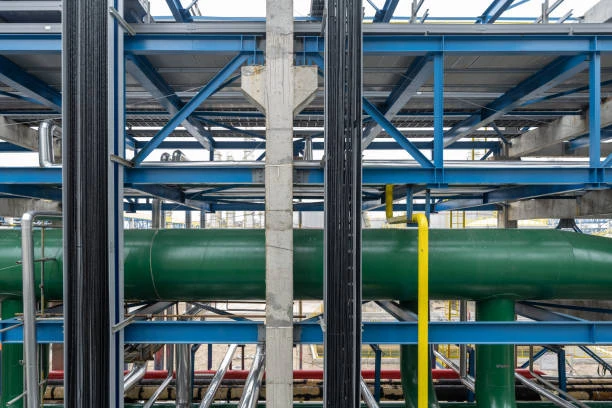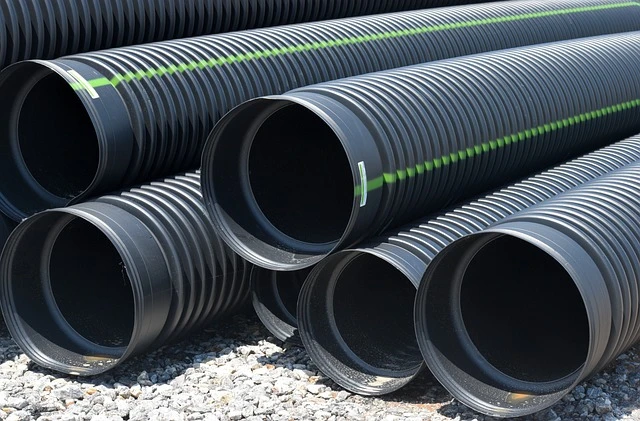PPR (Polypropylene Random Copolymer) pipes have become a significant component in modern plumbing and construction. Their unique properties have made them a popular choice for various applications, especially in water supply systems. Understanding the development history of PPR Pipe offers valuable insights into how they have evolved and why they are widely used today. This article explores the origins, advancements, and current status of PPR pipes.
Origins of PPR Pipe
Early Development of Polypropylene
The journey of PPR pipes begins with the invention of polypropylene in 1954 by Italian chemist Giulio Natta. Polypropylene is a thermoplastic polymer, and its unique properties, such as chemical resistance and durability, laid the groundwork for the development of PPR piping systems. Initially, polypropylene was used in various applications, including packaging and textiles.
Introduction of Random Copolymer
In the 1970s, researchers discovered that modifying polypropylene through random copolymerization could enhance its properties. This led to the creation of Polypropylene Random Copolymer (PPR), which exhibited improved flexibility and temperature resistance compared to traditional polypropylene. The new material quickly gained traction in the plumbing industry due to its outstanding performance characteristics.
Rise of PPR Pipes
1980s: Commercialization
The commercialization of PPR pipes began in the 1980s. As manufacturers recognized the advantages of PPR over traditional materials like metal and PVC, the demand for PPR pipes grew. Their lightweight nature, resistance to corrosion, and ability to withstand high pressures made them an attractive alternative for various applications, particularly in water supply and heating systems.
Adoption in Europe
By the late 1980s and early 1990s, PPR pipes gained widespread acceptance in Europe. Countries like Germany and Austria were among the first to adopt PPR piping systems for residential and commercial plumbing. The European market’s emphasis on energy efficiency and sustainability aligned perfectly with the benefits offered by PPR pipes.
Expansion into Global Markets
Throughout the 1990s, the popularity of PPR pipes continued to expand globally. As awareness of the environmental impact of traditional piping materials grew, many countries sought alternatives that were both effective and sustainable. PPR pipes emerged as a leading choice due to their recyclability and non-toxic properties.
Technological Advancements
Improved Manufacturing Processes
Advancements in manufacturing processes during the late 1990s and early 2000s contributed to the enhanced performance of PPR pipes. Innovations in extrusion techniques allowed for greater precision in pipe production, resulting in improved consistency and quality. Manufacturers began to produce a variety of fittings, valves, and accessories, further enhancing the versatility of PPR piping systems.
Enhanced Performance Features
Over the years, the development of PPR pipes included enhancements in their thermal resistance, pressure ratings, and overall durability. These improvements made PPR pipes suitable for more demanding applications, such as industrial and commercial plumbing systems.
Standards and Certifications
As PPR pipes gained popularity, industry standards and certifications were established to ensure their safety and performance. Organizations such as the American Society for Testing and Materials (ASTM) and the International Organization for Standardization (ISO) developed guidelines for the production and testing of PPR pipes. Compliance with these standards helped to solidify the credibility of PPR as a reliable piping material.

Current Trends and Applications
Widespread Use in Plumbing
Today, PPR pipes are widely used in various plumbing applications, including:
- Drinking Water Supply: PPR pipes are non-toxic and do not leach harmful substances, making them ideal for potable water systems.
- Heating Systems: Their excellent thermal insulation properties make PPR pipes suitable for hot water applications and underfloor heating systems.
- Irrigation: The chemical resistance of PPR pipes makes them a preferred choice for agricultural irrigation systems.
Sustainability Focus
The current trend toward sustainability and environmental responsibility has further boosted the popularity of PPR pipes. Their recyclability and energy efficiency contribute to reducing the overall environmental footprint of plumbing systems. As industries and consumers become more eco-conscious, the demand for sustainable materials like PPR is expected to continue growing.
Innovations in PPR Technology
Recent innovations have focused on enhancing the performance characteristics of PPR pipes. Developments such as anti-microbial coatings, improved jointing technologies, and multi-layer pipes are examples of how the industry is evolving to meet changing demands. These innovations aim to improve water quality, reduce installation times, and extend the lifespan of piping systems.
Challenges and Future Directions
Competition with Other Materials
While PPR pipes have established themselves as a popular choice, they face competition from other materials such as PVC, CPVC, and HDPE. Each material has its advantages and disadvantages, and the choice often depends on specific project requirements.
Addressing Misconceptions
Despite their benefits, misconceptions about PPR pipes persist, such as concerns about their suitability for high temperatures and their longevity. The industry must continue to educate consumers and professionals about the advantages and capabilities of PPR pipes to overcome these barriers.
Future Innovations
The future of PPR pipes looks promising, with ongoing research aimed at further improving their performance and expanding their applications. Potential developments include:
- Smart PPR Systems: Integrating technology to monitor flow rates, temperature, and pressure could lead to more efficient plumbing systems.
- Bio-based PPR Alternatives: As sustainability becomes increasingly important, research into bio-based polymers could pave the way for environmentally friendly PPR options.
Conclusion
The development history of PPR Pipe showcases a remarkable journey from the invention of polypropylene to the widespread use of PPR in modern plumbing systems. With numerous benefits, including chemical resistance, durability, and ease of installation, PPR pipes have become a preferred choice for various applications. As the industry continues to innovate and adapt to changing demands, PPR pipes are poised to remain a vital component in sustainable plumbing solutions.
FAQs
- What are PPR pipes made of? PPR pipes are made from Polypropylene Random Copolymer, a thermoplastic polymer known for its durability and chemical resistance.
- Are PPR pipes suitable for hot water applications? Yes, PPR pipes can handle temperatures up to 95°C (203°F), making them ideal for hot water systems.
- How long do PPR Pipe last? With proper installation and maintenance, PPR pipes can last over 50 years.
- Can PPR pipes be recycled? Yes, PPR Pipe are fully recyclable, making them an environmentally friendly choice.
- What advantages do PPR pipes have over traditional materials? PPR pipes are lightweight, resistant to corrosion, non-toxic, and have a long lifespan, making them superior to many traditional piping materials.


















